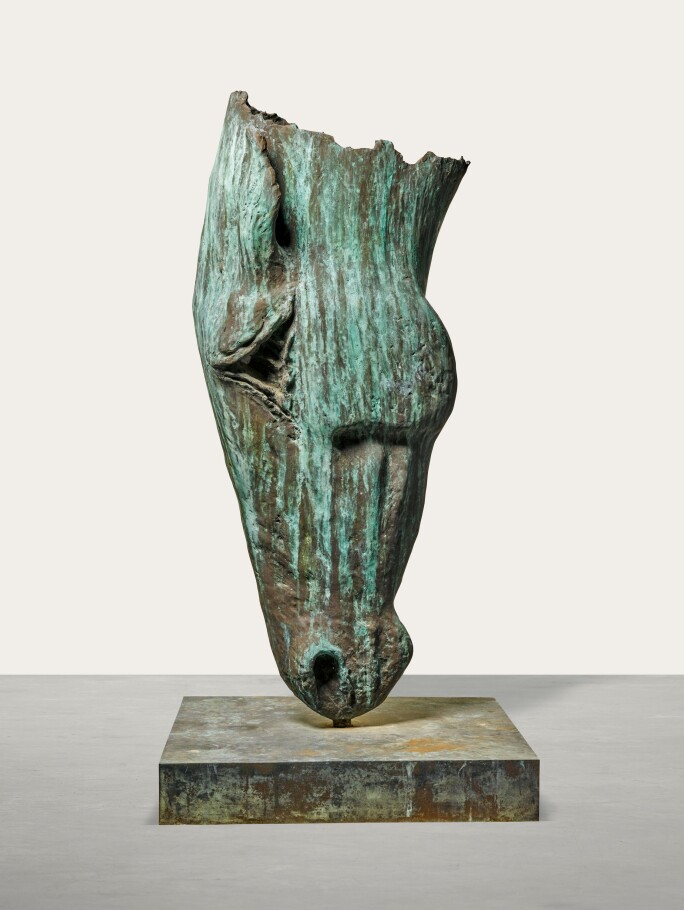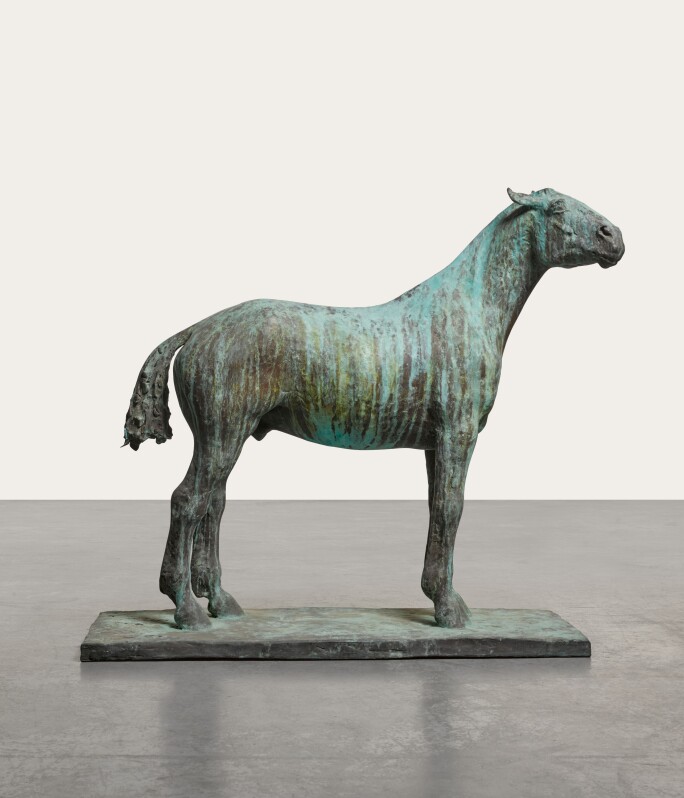B orn in Ireland in 1963, Fiddian Green gained a foundation degree from Chelsea College of Art, before studying Sculpture at Wimbledon College of Art and latterly gaining an Advanced Diploma in Lost Wax Casting from St Martin’s School of Art. Fiddian Green then established a bronze foundry in a converted sheep shearing shed in the Surrey Downs where he continues to live and work with his wife and four teenage children. His works famously punctuate the English country landscape with large sculptures of horses at Goodwood, Ascot and Glyndeborne.

In 2006 Fiddian Green was diagnosed with leukemia from which he has since made a full recovery. It is a testament to the extent of his passion for sculpture that during his time in hospital he had a pile of plaster at the end of his bed from which he modelled the first drafts of his 27 foot Still Water sculpture. A later edition of this work now draws huge crowds as a beloved landmark at London’s Marble Arch.

Throughout his career Fiddian Green’s work has drawn significant international interest. A major early commission resulted in his opening a foundry in Gozo, Malta, in 1992 and he spent a sustained period of time developing a practice there. Other key examples of his practice, typically, but not limited to, monumental bronze horses, can be seen in private and public collections in Australia, Russia, Hong Kong, Italy and the United States.
Fiddian Green’s representation of horses has been inspired by the Elgin Marbles that he first saw at the British Museum in 1983. In particular, he was struck by the Selene Horse, a remarkably well preserved fragment from the Elgin Marbles which would become a major influence throughout his career. Fiddian Green saw the works as embodying the most refined ideals of Greek and Classical Art.
"Capturing the skill, vitality, balance and beauty, so evident in these Greek carvings is my continued aim"

Horse at Water also demonstrates Fiddian Green’s fascination with the fragmentation of sculptures from antiquity. This was an interest he shared with the French Romantic sculptor Auguste Rodin (1940-1917) who had seen the Elgin Marbles on a visit to the British Museum a century before. Indeed, the connection of the two artists work has been the subject of a recent exhibition at the Sladmore Gallery.

Parallels can be drawn between Rodin’s practice of exhibiting isolated cast body parts or sculptures with pieces missing in the 1880s and the intentionally fragmented quality of Fiddian Green’s work. For example, in Horse at Water we are presented with only the animal’s head and the disjointed line at the top of the form suggests a break from a larger phantom body.
"I’ve always been fascinated by fragments. Something from the past that’s still present; something put back together"
By contrast to Horse at Water, Study for a Monument demonstrates the artist's interest in the total form of the horse. His intimate engagement with his work extends to his practice of sculpting from life models. At his Surrey home he keeps stables and has frequently remarked upon the inspiration that each individual horse has upon his practice. Indeed, the extent of his relationship with the horses was demonstrated when he brought his favourite model ‘George’ to the private view of a 2017 exhibition.
Fiddian Green’s uses the historic lost wax technique of bronze casting, which like his subject matter has roots in antiquity. It is notable that many of the casts are undertaken by the artist himself and the riveted, stricken and beaten surface of the bronze, which results in the sculpture’s tactile surfaces are created by hand by the artist. Colour is also of central importance to the work. He applies chemicals such as potassium polysulphide to create expressive, organic patination.
"Every line and every shape is the original mark and not a copy"
While Fiddian Green’s subject and medium have roots in antiquity his work transcends the Neo-Classical. The sculptures presented can be interpreted as combining an archaic subject matter with expressive patina, emotional directness and a visual language, which emphasises curvilinear forms and shapes to create a work that is self-consciously modern.




